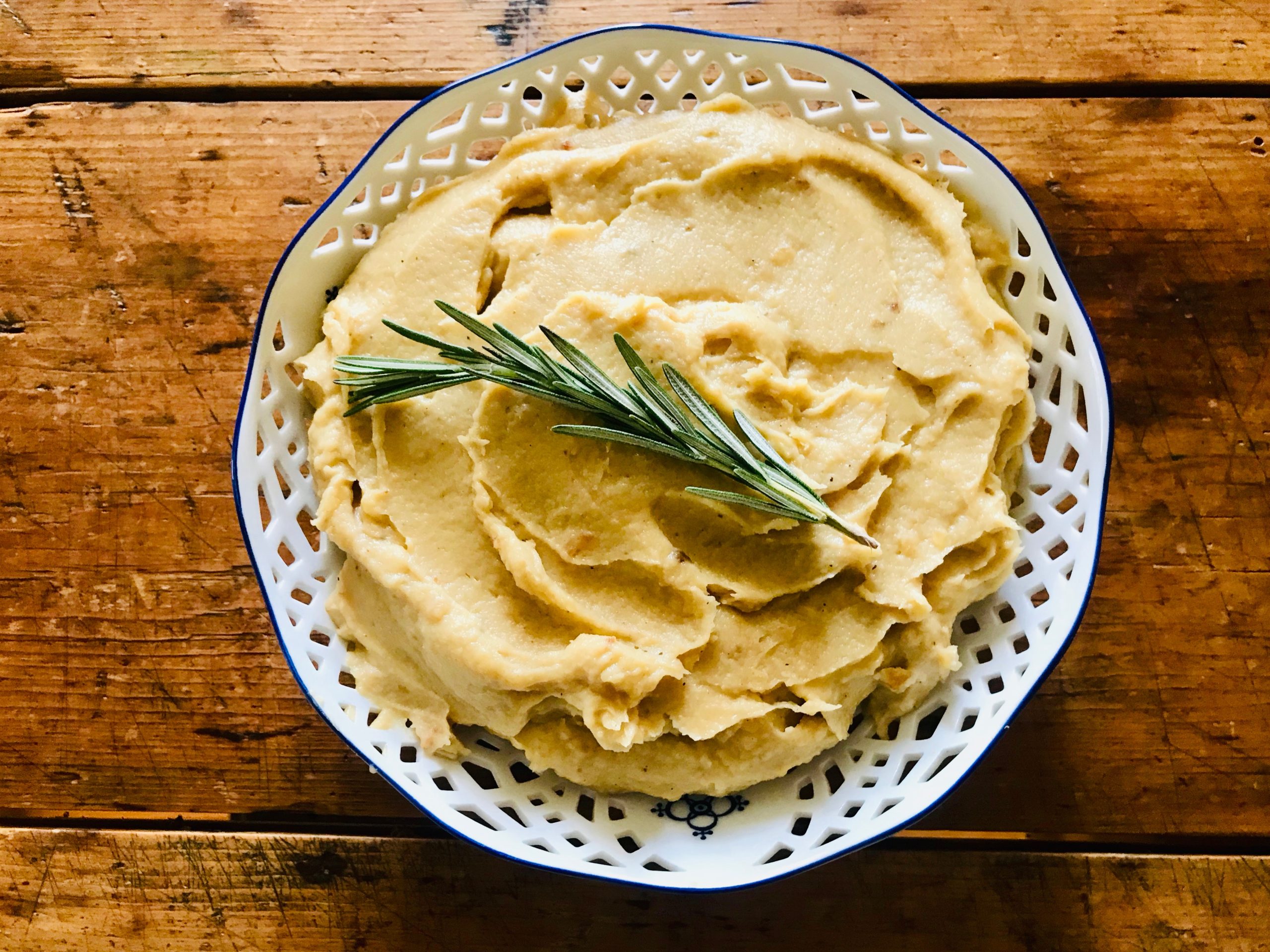Roasted parsnip puree is a delicious alternative to mashed potatoes—all the pleasure…without any blood sugar spike-and-crash downside.
Parsnip is a root vegetable in the carrot family; in fact, a parsnip looks like a cream-colored carrot. Parsnips are best eaten cooked (NOT raw!) and have a very sweet, slightly nutty flavor.
Nutrient-dense parsnips are a slow-digested, complex carbohydrate, which helps keep blood sugar stable. An excellent source of fiber, parsnips are a good source of Vitamin C and folate, as well as minerals, like potassium, magnesium and phosphorus.
The nutrients in parsnip support heart health, bone health and eye health. If you struggle with digestive issues, especially constipation, consider adding fiber-rich parsnip to your vegetable repertoire. Parsnips are VERY filling and I, personally, find it impossible to overeat them!
My favorite way of eating them is to, first, roast the parsnips; then, place in a food processor and blend with warmed coconut milk, nutmeg,
Celtic sea salt (to taste) and grass-fed butter (you can use olive oil if you prefer). See the recipe below. It’s creamy, luscious and tastes like dessert!
Roasted Parsnip Puree
Serves 4 to 6
For the roasted parsnips:
3 pounds parsnips, ends removed, peeled, and cut in 1/2-inch cubes
1-1/2 teaspoons Celtic sea salt
5 tablespoons olive oil
For the parsnip puree:
2 tablespoons (1 oz.) grass-fed butter or olive oil
1-3/4 cups organic coconut milk
1/2 teaspoon ground nutmeg
Celtic sea salt, to taste
Preheat oven to 350 degrees. Line two heavyweight baking sheets with parchment paper.
In a medium mixing bowl, combine cubed parsnips, olive oil and sea salt. Make sure the parsnip is well coated in olive oil. Arrange in a single, even layer on the parchment-lined baking sheet. Roast on the center rack for 20 mins. Then, stir the parsnips well, turn pan to the other side, and roast another 20 mins. When the parsnips are golden-brown and soft, they are done.
While the parsnips are roasting, pour the coconut milk into a saucepan and warm over medium heat. When the coconut milk comes to a gentle simmer, cover, and turn off heat.
Once they have finished cooking, transfer roasted parsnips to a food processor.
Add grass-fed butter, nutmeg and warmed coconut milk. Pulse until smooth and creamy. If the parsnip puree is too thick for your taste, add some filtered water to thin out. Season with Celtic sea salt, to taste. Serve warm.


